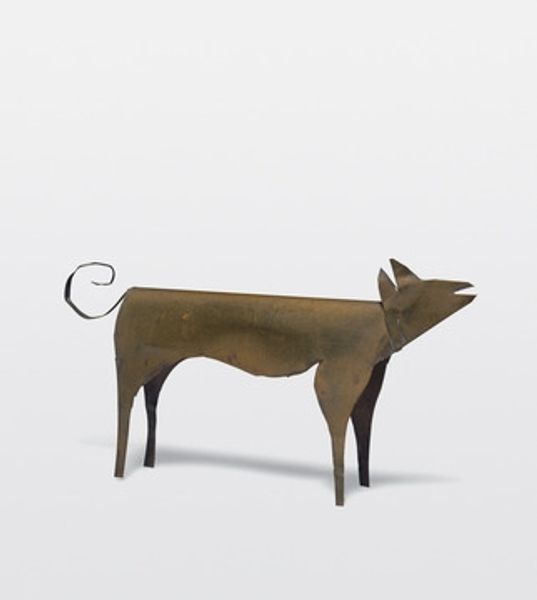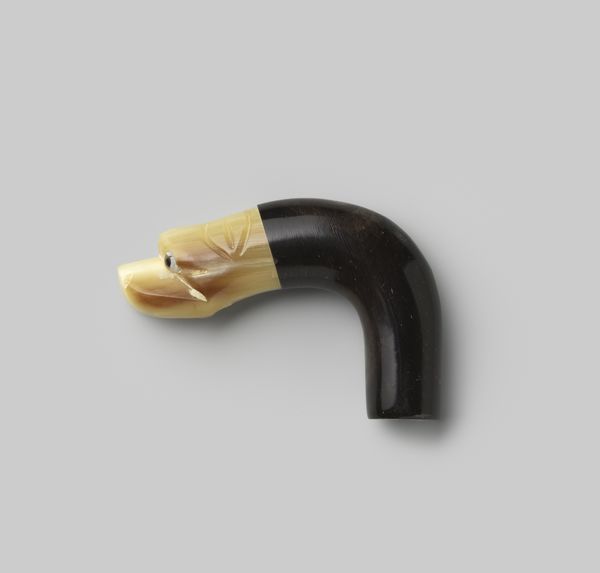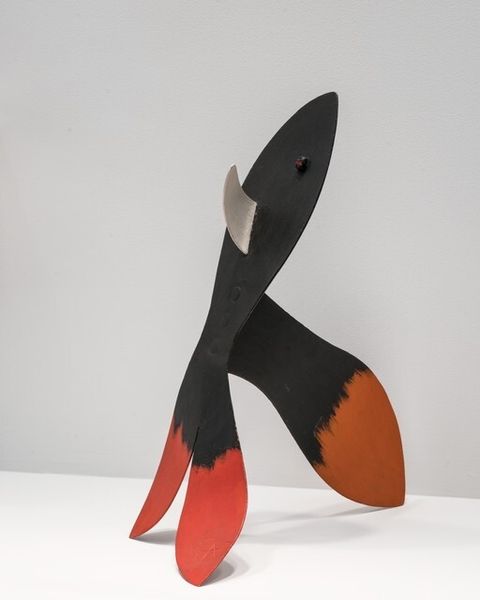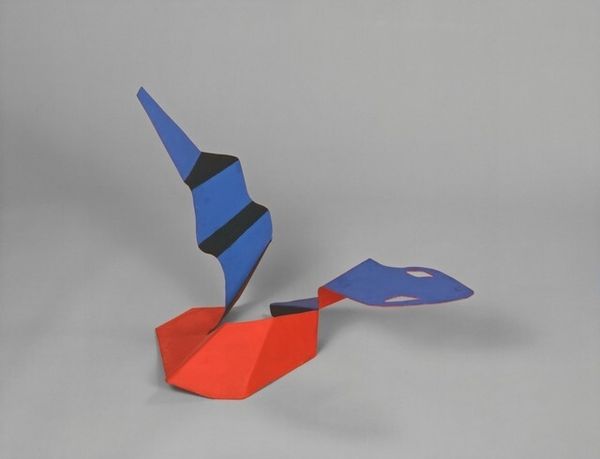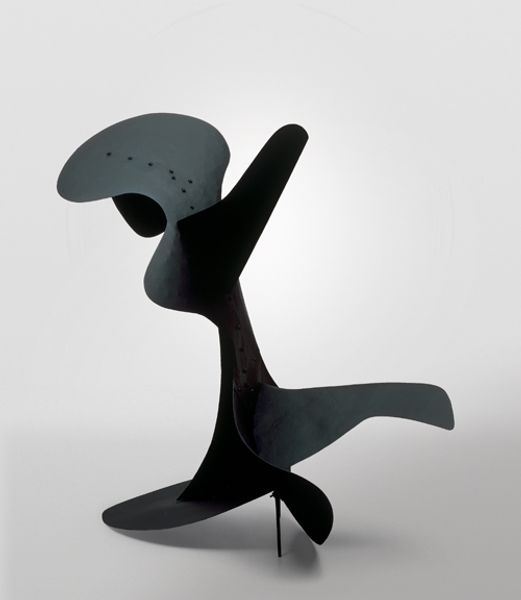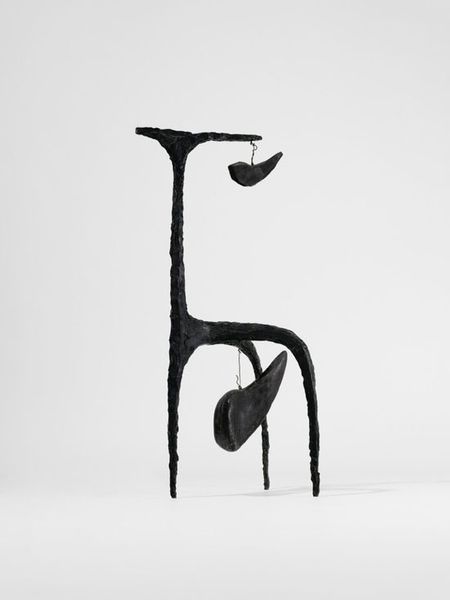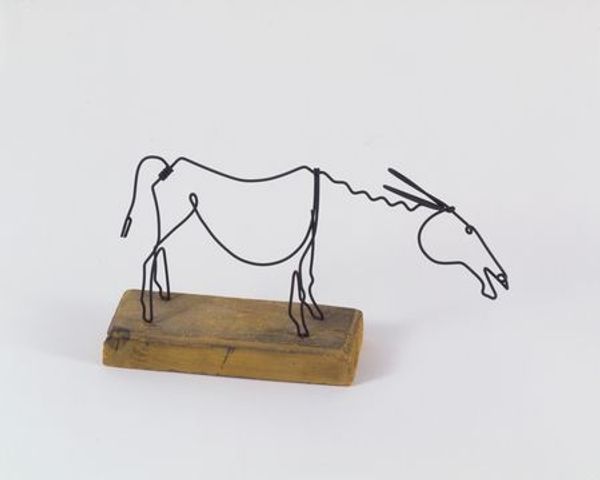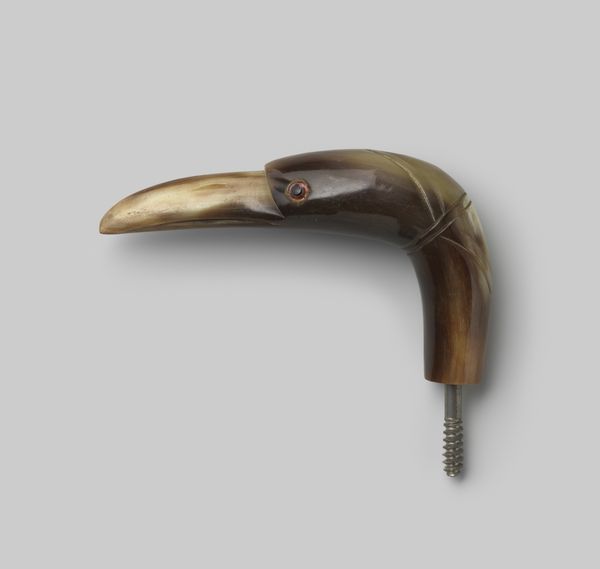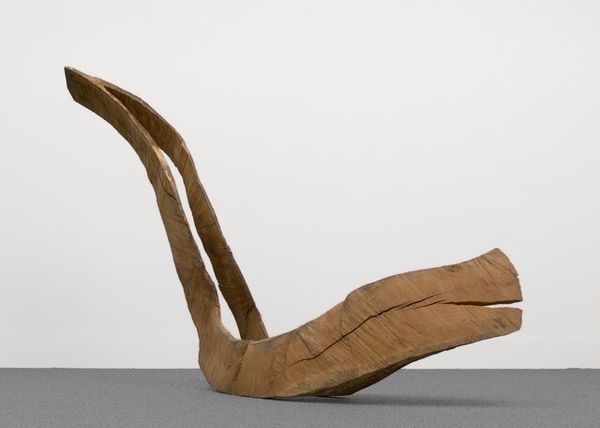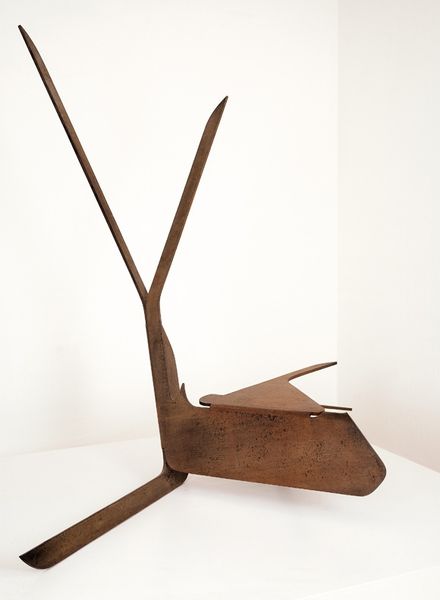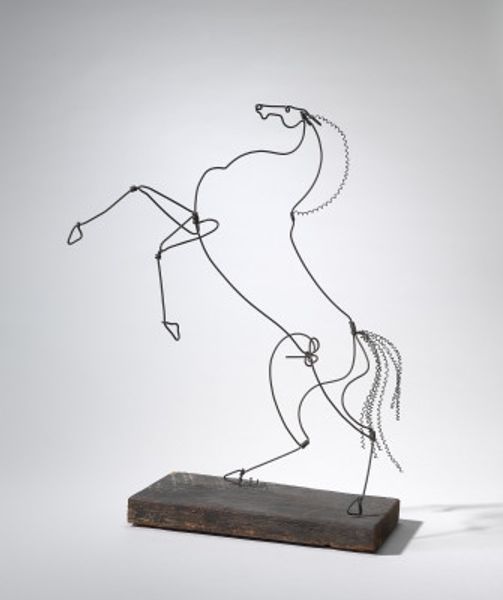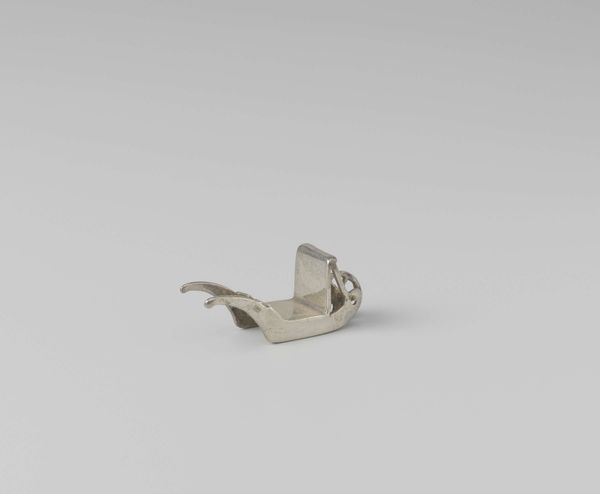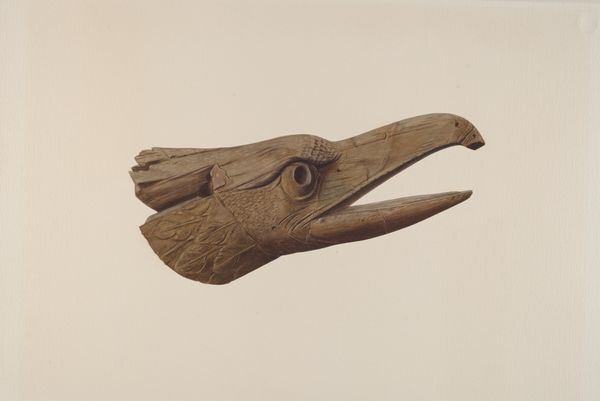
metal, found-object, sculpture
#
metal
#
found-object
#
constructivism
#
geometric
#
sculpture
#
abstraction
#
modernism
Copyright: Public domain US
Editor: Here we have Alexander Calder’s “Duck,” created around 1909. It’s a striking sculpture made of found metal objects. It feels so simple, almost playful in its geometric shapes. What strikes you about this piece? Curator: The directness of material use is key here. Calder isn't trying to disguise the found object; rather, the act of repurposing transforms discarded material into something new. Look closely—those planes, the simple joins; what story do you think that tells us about the resources available to him? Editor: It suggests perhaps resourcefulness and using what’s on hand. Maybe a critique, even then, of consumerism? Curator: Exactly! Calder’s work often engages with labor and production. Think about it - he's elevating the everyday by engaging with the leftovers of industry and turning what could be viewed as waste, the bi-products, into art. He draws a direct line between labor and fine art in a way that challenged the academic painting of his time. Do you see any parallels between the raw materiality and early 20th-century socio-political context? Editor: I see how his use of rudimentary material mirrors the rise of industrial manufacturing. Also, constructivism rejected decorative ornamentation for functional design, similar to this metal sculpture's functional geometry. Curator: Precisely! And notice the “Duck” is not crafted to be exactly representative; it focuses on essentials. It prompts us to think about how materials are valued, used, and given new purpose through artistic intervention. This early sculpture also anticipates his later work with mobiles, connecting mass and motion with ingenuity. Editor: I had been thinking about the sculpture itself, and not the deeper meaning in material use. Seeing how the artwork fits within social commentary and design really changes how I see it. Curator: Indeed. Thinking through production reveals surprising social histories.
Comments
No comments
Be the first to comment and join the conversation on the ultimate creative platform.
